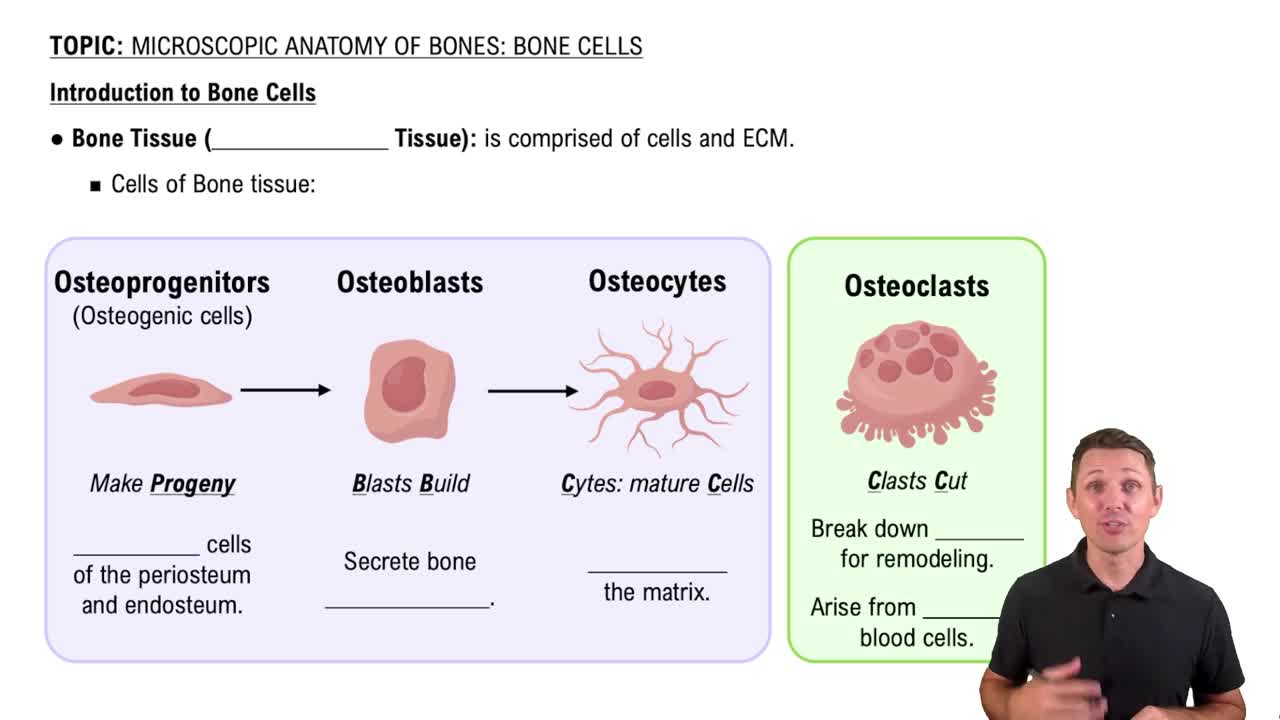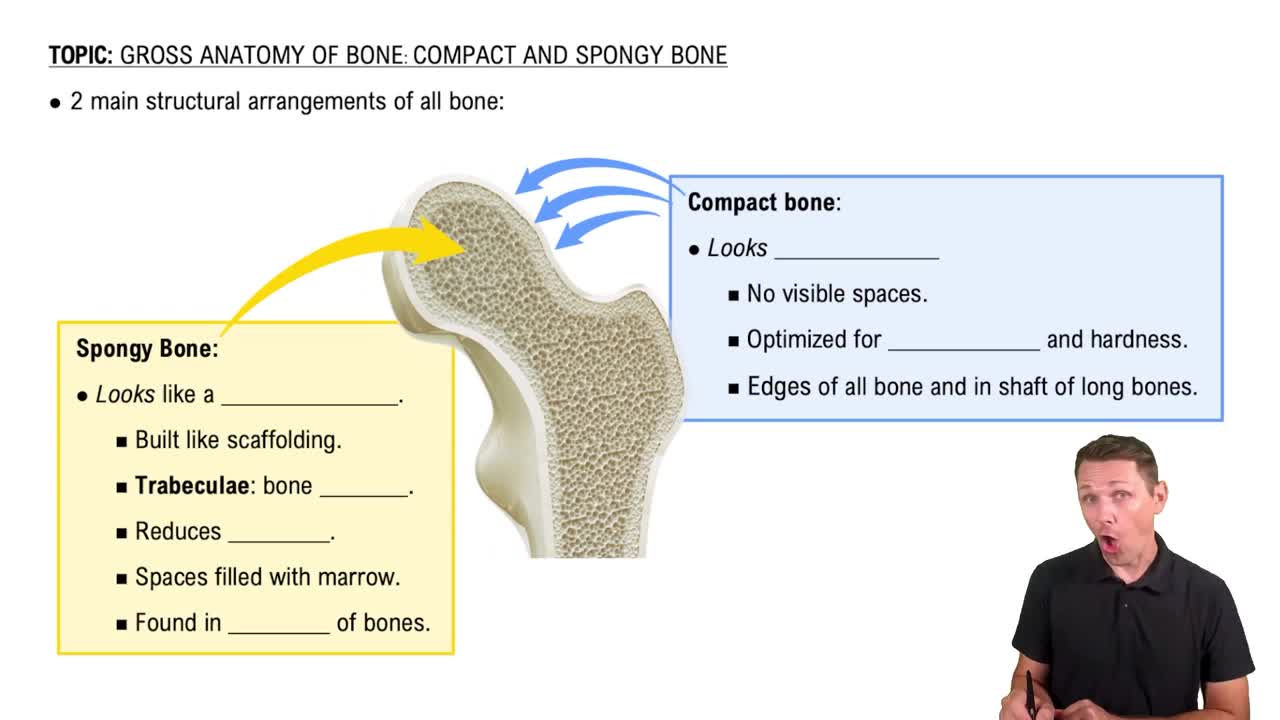Here are the essential concepts you must grasp in order to answer the question correctly.
Bone Growth and Remodeling
Bone growth occurs through a process called remodeling, where old bone tissue is replaced with new tissue. This process is regulated by various factors, including mechanical stress and hormonal signals. As long bones grow in length and diameter, the inner bone structure adapts to maintain strength while allowing for increased size.
Recommended video:
Introduction to Bone Cells
Compact Bone Structure
Compact bone, also known as cortical bone, is dense and forms the outer layer of bones. It provides strength and support, allowing bones to withstand stress. The thickness of compact bone remains relatively constant during growth because it is balanced by the processes of bone formation and resorption, ensuring structural integrity.
Recommended video:
Wolff's Law
Wolff's Law states that bone adapts to the loads under which it is placed. When mechanical stress is applied to a bone, it remodels itself to become stronger in response. This principle explains why the diameter of long bones increases while maintaining a consistent thickness of compact bone, as the bone adapts to support increased weight and activity.
Recommended video:
Second Law of Thermodynamics
 Verified step by step guidance
Verified step by step guidance


